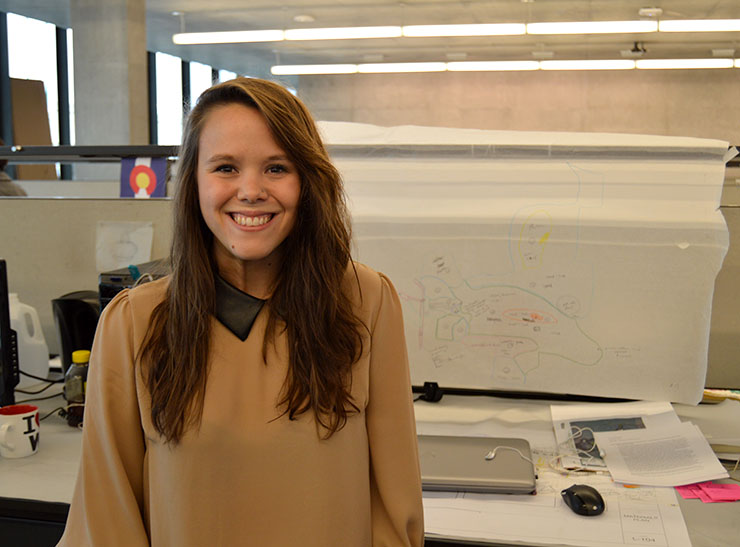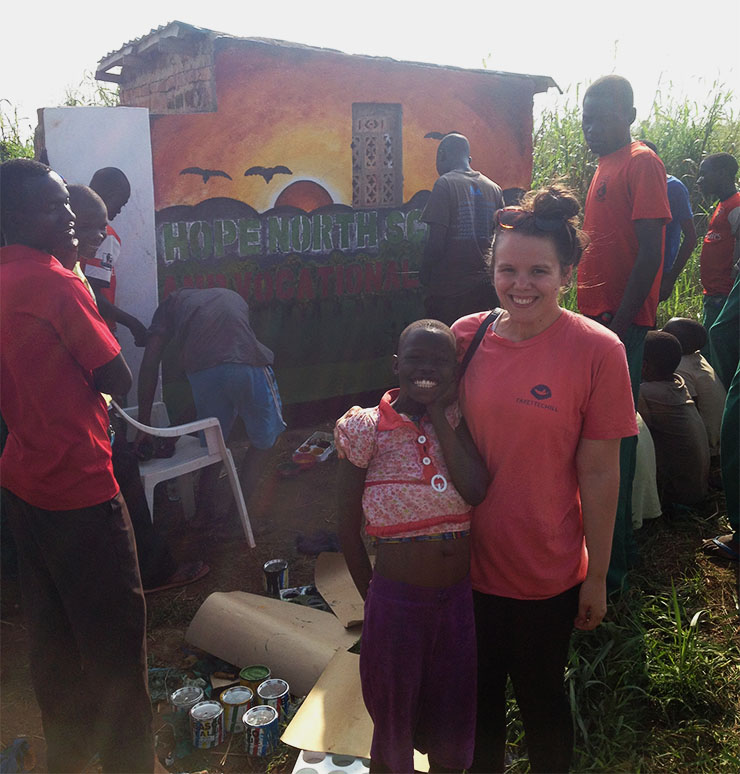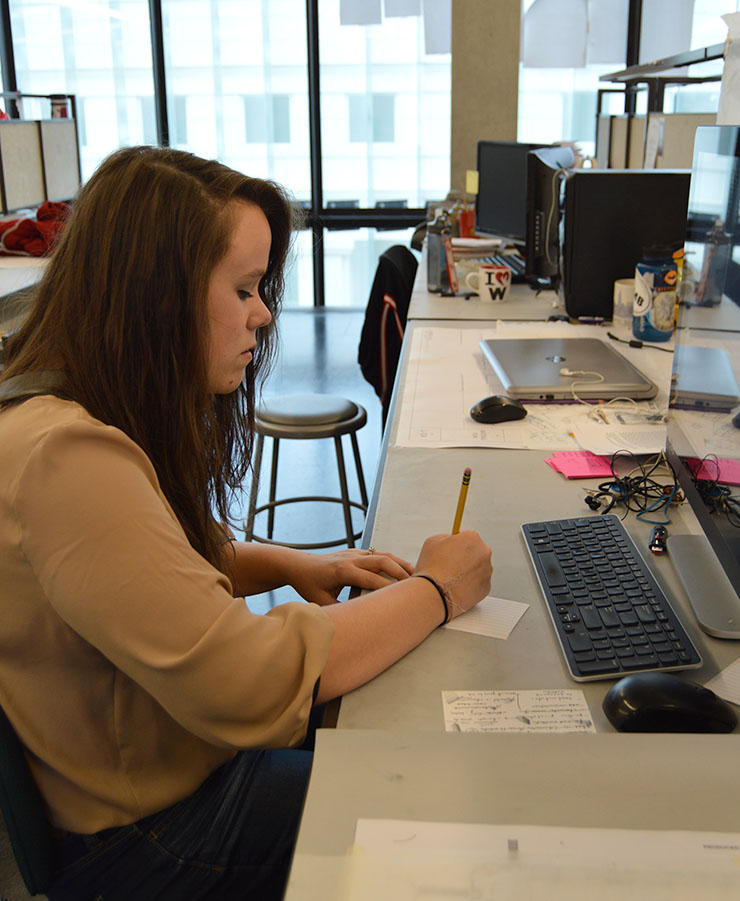Mary Nell Patterson is a fourth-year landscape architecture student. Initially, she was a pre-nursing major, but after realizing that her fear of needles wasn’t going away anytime soon, she started to take notice of what she did love: art and the outdoors. Through her studies in the Fay Jones School of Architecture, she realized that she’s been drawing landscapes her entire life.
Last summer, in the first partnership between the Honors College and the Clinton School of Public Service, Mary Nell traveled to Uganda to work at a school called Hope North. There, she and graduate students from the Clinton School worked with the students on beautification efforts and – most importantly – a hand washing station model. Mary Nell’s experience hasn’t left her. Instead she thinks about the people of Uganda and her travel companions often as she works on her thesis, which explores what landscape architecture could bring to the infrastructure of Africa.
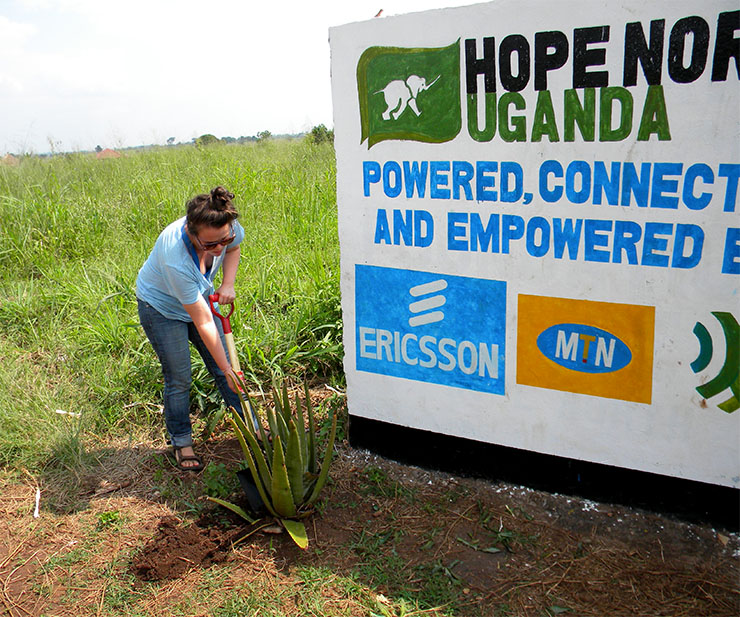
Mary Nell works on a campus beautification project. The students at Hope North worked with Mary Nell and the graduate students from the Clinton School to clean up the grounds, paint a mural at the entrance, and add native plants.
Question: Why did you decide to go on the program to Hope North?
Answer: Normally people in the landscape architecture program do an internship after their fourth year, but our study abroad was moved to the summer of 2015, so we had to look for internships after our third year. I was exploring my different options, when my professor Noah Billig emailed me about the Clinton School of Public Service and how they were offering internships to Honors College students.
We had no idea what was going to go into it. I had all of these questions, and he didn’t really know the answers, because this was the first time that the Clinton School had proposed this program to the Honors College.
I’d never done any work like this before, but I have always liked to travel, so I thought that it would be an amazing opportunity to bring landscape architecture, design, and the skills that I’ve acquired in school to this internship.
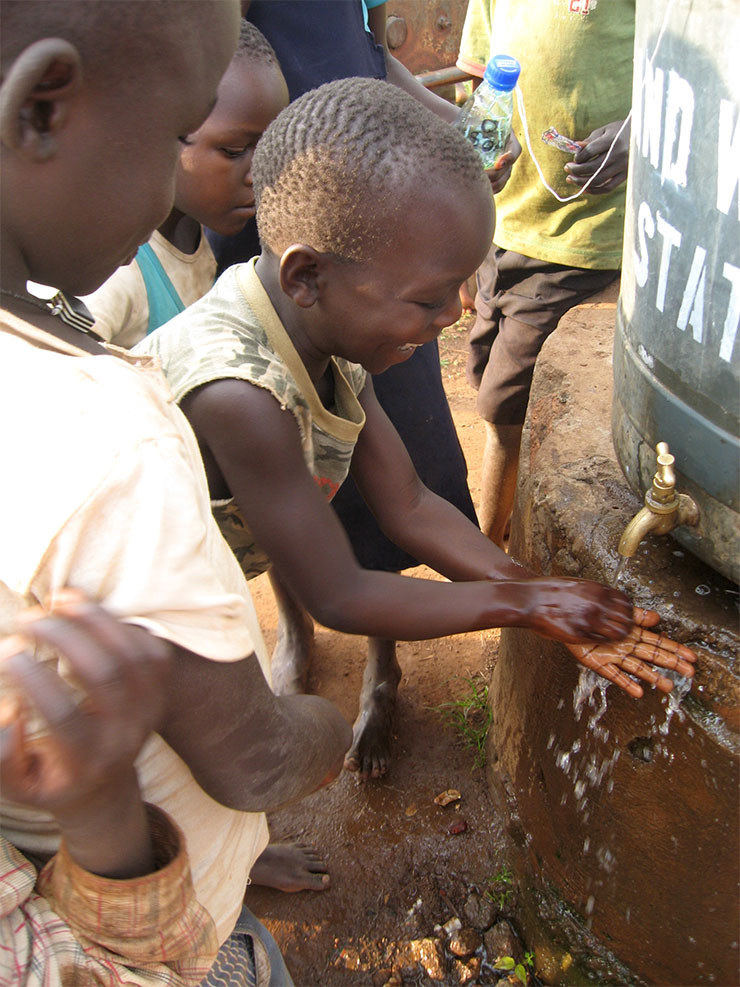
Children at Hope North use the hand-washing station model, which was a priority for Mary Nell and her travel companions.
Question: What were some of the challenges during your projects?
Answer: We entered the project thinking that we were going to be making big changes at a large scale, but when you’re working with an organization like Hope North there are not always the funds to accomplish large-scale projects. That was a challenge for me because I wanted to see all of these things happen, and it just wasn’t possible. So we had to prioritize and certain things just had to be cut from my projects, like an arbor over the Hope North entry gate. We wanted the hand washing stations to be built and that was a huge priority for us, because typhoid was rapidly spreading amongst the students.. It was more than worth it for us to design and implement a hand washing station.
Question: What mark did the service-learning aspect of the trip leave?
Answer: I’ve always had an interest in service learning. I was very involved in several service learning projects in high school, but I’d never associated it with landscape architecture and what I was doing in college. This was a way for me to do that. It was a way for me to bring the skills that I had to a place where the people had never heard of landscape architecture.
I realized that places like Uganda and developing countries could benefit from my profession. It’s interesting to me that landscape architecture is thought of as a rich man’s profession, because not very many people can afford to hire landscape architects to do certain projects. As a whole that’s a misperception, and that doesn’t mean that countries like Uganda and India can’t benefit from what we do. That really changed my outlook on what the services are that landscape architecture can provide.
Question: What are some examples of how landscape architecture could help developing countries?
Answer: This is what I’m writing my thesis about. The use of local materials is one thing. The people who live in developing countries have a deep knowledge of the materials around them, and it is very important that local materials be used in landscape architecture projects in this type of setting. Also, working and designing with the community is an important benefit as well. That’s what I did at Hope North, working with them to see what they would want and need. If you’re working with them and you have their input, then they will appreciate the work you’ve done together so much more than if I were to come in and say, “This is what we’re doing, and this is what you need.” They’ll maintain it better, they’ll appreciate it more, they’ll use it more, and they’ll understand it.
A big issue is storm water management practices. That’s a very large part of landscape architecture, and I think that African countries could benefit from that as well.
Question: How might your experience at Hope North affect your career decisions?
Answer: I’ve dipped my hand into a lot of things. Last year, I worked with Professor Kimball Erdman on a historic preservation project that involved researching Rohwer, a Japanese internment camp in Southeast Arkansas. The summer before that I was working with Professor Phoebe Lickwar on developing the concept of “hypernature.” My work at Hope North and the research and the traveling that I have done are all very different aspects within landscape architecture. I would love to travel and do service work in my career in the future.

